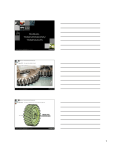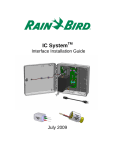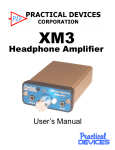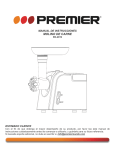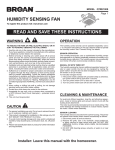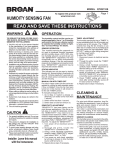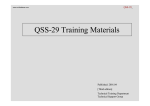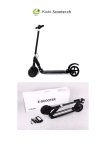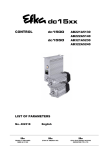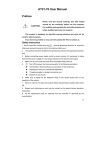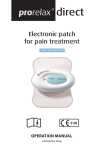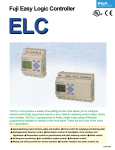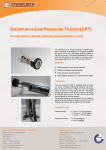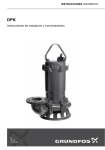Download USER MANUAL
Transcript
R USER MANUAL DPK-2 DPK-3 HIGH-SPEED, SINGLE-NEEDLE LOCKSTITCH ZIGZAG SEWING MACHINES 1) For proper use of the machine, read this manual thoroughly before use. 2) Keep this manual in a safe place for future reference in case the machine breaks down. SUNSTAR MACHINERY CO., LTD. MME-050629 CAUTION: Operate the machine at a recommended speed Rigorous testing and inspections have been performed on the machines at the factory. However, to ensure safe and proper use of the machine, the user should carefully observe the following instructions. During the first two weeks of machine operation, run the machine at 2,200 r.p.m for DPK-2, and at 2,000 r.p.m for DPK-3 machines. Afterwards, operate at a continuous rated 2,500 r.p.m for DPK-2, and at 2,300 r.p.m for DPK-3. Keep in mind that in actual operation of the machine, the speed must be adjusted in line with the operation method and the user's control over the machine. ■ DRIVING MOTOR, PULLEY AND BELT We recommend that the motors and belts with the following specifications be used for proper operation of the machines. Motor: Motor with separate transmission – 3-phase, 2-pole, 200W output (or 1/4 horsepower) – Motor speed: Approximately 450 r.p.m at 50Hz, and 1,750 r.p.m at 60Hz Belt used: M-or V-shaped belt Select the motor and pulley in reference to the below table Outer diameter of the motor pulley Speed of the machines (r.p.m.) 60Hz 50Hz 2,800 70mm 85mm 2,500 60mm 75mm 2,200 55mm 65mm 2,000 50mm 60mm ■ LUBRICATION Lubrication is one of the most critical factors in ensuring proper operation of delicate sewing machines as DPK series. Note that supplying high-quality lubricants to all driving parts can enhance durability of the machine. Use P-50C, lubricant that comes with the sewing machine, or S.F. (70W-150) of the pulley brand. ■ NEEDLE All needles have type and size number, and the size number is carved on the needle body. The needle used for DPK series is straightblade DP×5 (135) (6) coated with chrome. The needle size is determined by the thread size and the thickness or weight of the sewing materials. The needle size is set as follows at the factory, unless is specified otherwise. – Size number 11~16: for DPK-2 models – Size number 14~16: for DPK-3 models ■ THE DPK SEWING MACHINE SERIES SunStar’ s DPK series are single-needle, zigzag lockstitch sewing machines. This series promises to offer more user convenience, speedy thread take-up at the start of sewing, and smooth and quite machine operations. Enjoy excellent and consistent stitches at all speed, even at the maximum speed of 2,800 r.p.m. ■ FEATURES – Improved adjustment of needle zigzags and stitch lengths – Innovative thread take-up lever – Protection of internal machine parts from dust with the enclosed mechanism -2- ■ SPECIFICTION OF DPK SERIES Model DPK-2 DPK-3 Maximum speed 2,800 r.p.m. 2,500 r.p.m. Continuous rated 2,500 r.p.m. 2,300 r.p.m. Needle zigzag 0mm~5mm 0mm~10mm Stitch length 6SPI~14SPI (4.2mm~1.8mm) 6SPI~14SPI (4.2mm~1.8mm) Input Descent Descent Presser foot Hinge type Hinge type Lifting of presser foot Max. 6.0mm Max. 8.0mm Lubrication Manual Manual Needle type and size DP× 5 #11 DP× 5 #14 Standard thread Cotton 80/3 Cotton 80/3 Application General flat seaming Tacking and basting of upper garments support [ Fig. 1 ] ■ APPLICATION SunStar’ s DPK-2 models are high-speed, single-needle, two-thread zigzag lockstitch sewing machines for industrial use. Specially designed for hemming, seaming, padding and attaching on knitted underwear, lingerie, dresses, trousers and other articles of light to medium heavy materials made of cotton, wool, silks, rayon, nylon and similar synthetics. In addition, this sewing machine creates a hand-made effect by: enabling the user to attach pre-made waistband linings to upper garments or men’ s trousers; joining two pieces of cloth or lightweight leather, and preparing coat linings or finishing up coat collars. DPK-3 features up to 10mm (13/32˝)-sized large needles for zigzagging. Specially made for all types of sewing works on medium to heavy materials. Good for basting and tacking coat lining, hemming and stitching the edges of heavyweight leather, tents, sails and other fabrics, and sewing the shoe uppers and seaming the edges of inlay soles. ■ HOW TO CHANGE NEEDLES Turn the handle to bring the needle bar to its highest position. Loosen the needle clamp screw (A in Figure 2) to take out the used needle. Insert the new needle, with its groove facing front, into the needle hole as far as it would go. Then firmly tighten the screw while holding the needle in the right position. A [ Fig. 2 ] ■ THREAD The threads used for sewing should be able to move freely in the needle hole. Roughly or inconsistently woven threads normally break during sewing, and/or cannot give you the number of stitches you desire to get. The recommended thread for DPK-2 and DPK3 is cotton 80/3. For all DPK sewing machines, you must use threads that are wound from right to left. ■ HOW TO REMOVE THE BOBBIN CASE Turn the pulley in a counterclockwise direction to move the thread take-up lever to its highest position. With your left index and the second finger, push up the latch lever of the bobbin case frame to remove the frame with the bobbin case. Then push down the latch lever to remove the bobbin case. Bobbin case Hook [ Fig. 3 ] -3- ■ THREADING Your sewing machine comes with properly placed threads. Therefore, the easiest and simplest way to re-threading is to tie the thread that comes with the machine, with a new one. Check if the knotted area of the old and new threads goes through the needle hole smoothly. CAUTION Pull the thread 100mm out from the needle hole when starting the sewing. If you need to replace the threads completely, refer to the threading table and Figure 4. [ Fig. 4 ] ■ BOBBIN WINDER The bobbin winder comes with the sewing machine and is used to wind the thread on the bobbin. a) Place the bobbin on the bobbin winder shaft. Place the thread to move between the thread hole and the tension disk. b) Turn the bobbin in a clockwise direction several times to make the threading easier. c) Press the latch (③, Figure 5), then the wheel of the bobbin winder will come in contact with the belt. Run the machine until the wheel of the bobbin winder automatically removes itself from the belt. At this point, the thread is wound on the bobbin completely. Threads can be wound tightly or loosely depending on the type of threads used. Adjust the thread tension by turning the index screw (②, Figure 5). ② ① Pulley Tension disk ③ Latch Adjusting screw [ Fig. 5 ] ■ HOW TO THREAD THE BOBBIN CASE Insert the bobbin case in the bobbin frame. Firmly fix the bobbin in the frame, push the thread through the hole and pull it into the lower part of the tension spring and the hole. [ Fig. 6 ] ■ HOW TO PLACE THE BOBBIN CASE Turn the pulley until the needle bar comes to its highest position. Bring the bobbin case towards the center stud in the bottom of the bobbin case. Press the bobbin case until it makes a clicking sound in the frame. Follow the instructions carefully to protect the needle in the bobbin frame. [ Fig. 7 ] ■ HOW TO PULL THE THREAD FROM THE BOBBIN Hold the end of the thread and turn the pulley towards machine turning until the needle starts to move up and down again. Pull the thread lightly so that the thread in the bobbin passes up through the needle hole. Place two strands of threads under the presser foot when you begin to sew. ■ SEWING Before and after seaming, always turn the pulley to move the thread take-up lever to its highest position. Otherwise, threads can get tangled or come out from the needle hole during sewing. If the thread take-up lever is at the highest stroke, you do not necessarily have to hold on to both threads. -4- ■ HOW TO ADJUST THE WIDTH OF STITCHES You can adjust the width of stitches by turning the dial (A, Figure 8) in the center of the machine arm. If the dial is set at 0, the machine will perform straight line stitching. Turn the dial to the left to increase the width and to commence zigzag sewing. CAUTION Stop the machine before rotating the dial (A). Narrow Wide [ Fig. 8 ] ■ HOW TO ADJUST THE LENGTH OF STITCHES You can adjust the length of stitches by turning the dial inside the pulley (A, Figure 9). Turn the dial to perform straight line stitching or zigzagging. Turn it to the right to increase and to the left to decrease the length of stitches. Long Short [ Fig. 9 ] ■ HOW TO ADJUST THE THREAD TENSION Accurate control of thread tension determines sturdiness and elegance of completed seams. Tension is accurately balanced when the needle engages the bobbin thread at the center of the sewing material. To increase thread tension of the needle, turn the screw (A, Figure 10) clockwise and vice versa. If you still cannot get a proper number of stitches, unfasten the screw (C, Figure 10) and turn the thread tension point (D, Figure 10) to control the tension of the thread take-up lever spring (A, Figure 11). For more tension, turn the point (D) in a counterclockwise direction and for less, in a clockwise direction. C A B D [ Fig. 10 ] A [ Fig. 11 ] ■ HOW TO ADJUST THE PRESSER FOOT PRESSURE The index screw controls the pressure of the presser foot. (A, Figure 12) To raise the pressure, turn the screw (A) in a clockwise direction and to reduce the pressure, either turn the screw counterclockwise or turn it up. Too much pressure can deform the sewing materials, and too less can result in uneven or skipped stitches. Normally, low pressure is recommended for the presser foot. Low High A [ Fig. 12 ] ■ HOW TO INSTALL THE KNEE LIFTER The knee lifter replaces manual operation of the presser foot. To install, assemble the knee lifter units as shown in Figure 13. Then fix it onto the backside of the table with three wooden screws. [ Fig. 13 ] -5- ■ FABRIC GUIDE The fabric guide comes supplied with the machine and is designed to align the edge of the sewing material with the seam lines. Refer to Figure 14 for installation. Unfasten the index screw (A, Figure 14) to adjust the fabric guide. Slide the fabric guide (A) to the left or right until you secure an adequate width between the seams and the edge of the sewing materials. B A [ Fig. 14 ] ■ HOW TO INSTALL THE MACHINE ONTO THE TABLE Accurately mount the drip fan under the table with four nails to install the machine head. A C B 180 395 C 60 20 235 Centerline of machine pulley 80 90 90 170 B Centerline of motor pulley 195 225 180 Centerline of belt [ Fig. 15 ] [ Fig. 16 ] ■ HOW TO CLEAN THE MACHINE Cleaning the sewing machine is simple yet important. No need to take out any parts during cleaning. Remove lint and dirt gathered around the hook, input groove and the lower part of the needle bar. ■ HOW TO MAINTAIN THE MACHINE Be sure to check and observe the following instructions to improve durability of the sewing machine. ■ BEFORE USE – Drop one or two drops of oil onto all driving parts. – Check if the needle is intact and placed correctly. – Make sure threading is done right. ■ AFTER USE – Remove any dust build-up or lint around the needle plate and the hook. – If there is any problem with the machine, ask technicians for assistance or repair. – Check daily and keep a record of the number of times the needle breaks or the thread breaks. – Place the dust cover on the machine at all times. -6- [ Fig. 17 ] ■ TABLE DRAWING -7-







